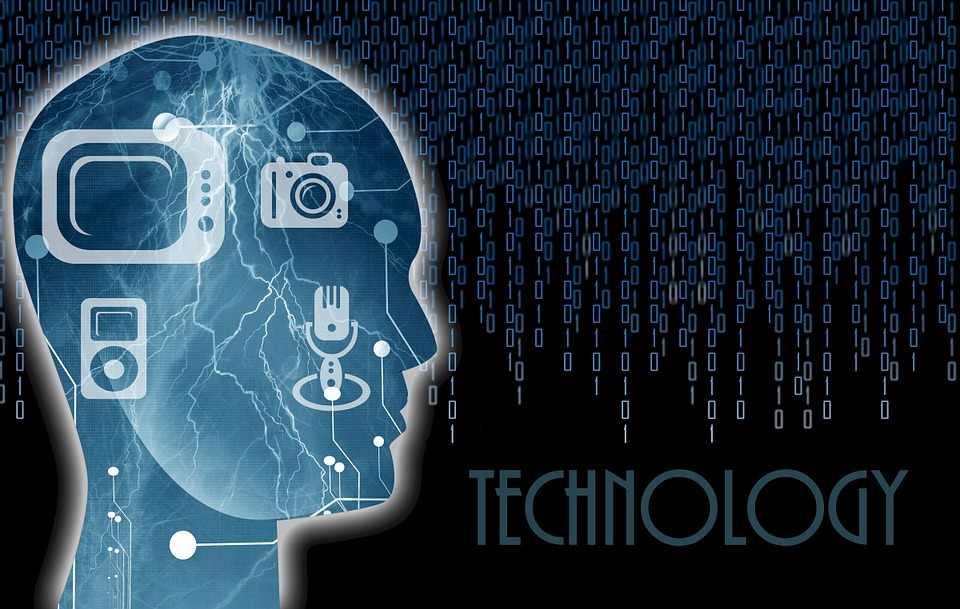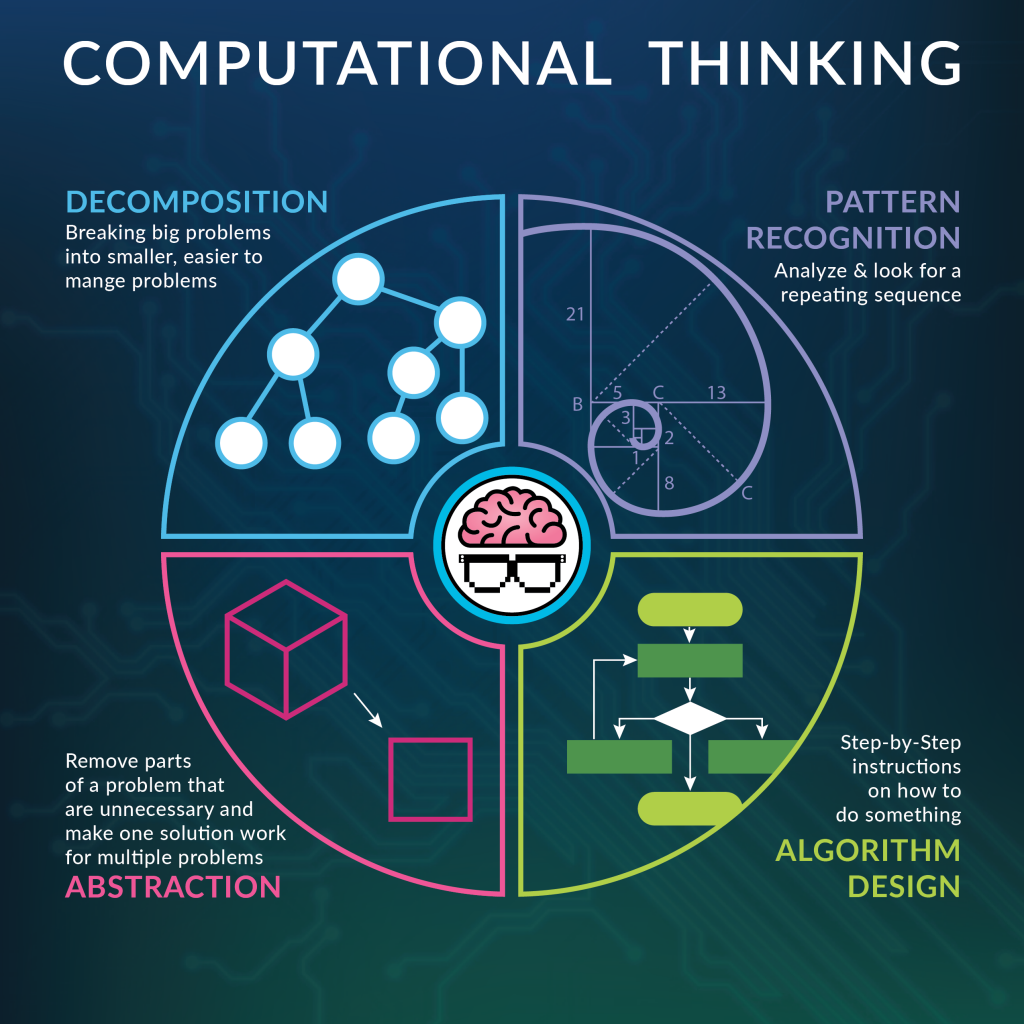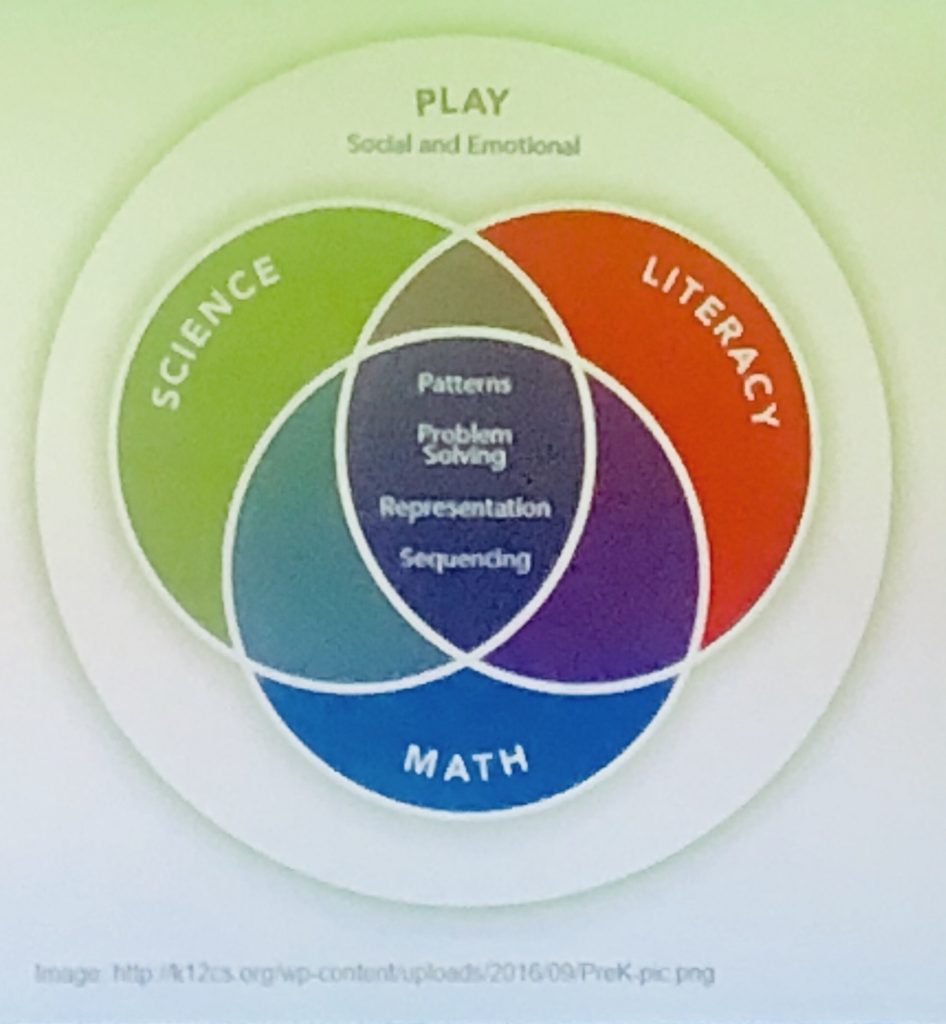
Computational Thinking: The WAY we think in LIBRARIES
–Note: Upon attending American Libraries Association Midwinter, 2019, I walked away with another ideology to help shape and mold what we librarians do in the library, but this can also be applied to literacy building for classroom teachers. Professional Development such as sessions like the one I will share on Computational Thinking in Early Literacy Development encourage us to obtain ideas on how to continuously evolve the learning for our patrons–
When my generation was young, we did a lot of thinking and problem solving, much like the generations before and after– the tools we used to develop thinking, relevant to our world, were much different than they are now and so are the processes which young people develop thinking in order to navigate their world. A new foundational skill that has emerged is known as computational thinking. Computational thinking, also known as CT, is a process of thinking about the ways to take a problem and potentially solve it, be it through technology or without, through four components: Decomposition, Pattern Recognition, Abstraction, Algorithm Design. It is what allows us to be successful at looking at a challenge and making the next step when addressing it.
To put it into simpler terms, computational thinking is a process used to solve problems or complete a task, and is a necessary skill for our developing young people, especially in a globalized world. It is the foundation to be successful in a variety of subjects, from science, literacy, math, and social emotional learning, and empathy building. Global Computational Thinking, which I am coining here, is the idea of taking computational thinking and applying it to global learning, global collaborating, and the global tenets.
 Image from https://www.computationalthinkers.com/product/computationalthinking/
Image from https://www.computationalthinkers.com/product/computationalthinking/
According to Jeannette Wing (2006), “Computational thinking allows us to take a complex problem, understand what the problem is, and develop possible solutions. We can then present these solutions in a way that a computer, a human, or both, can understand.”
Because technology is such an instrumental part of the learning and teaching process, it is necessary for learners of all ages, be aware how to navigate challenges within, and utilizing, these technologies. So where do we start? Do we hand students technology and tell them to go? No, in early learners, we build the four domains, to allow for success when applied all together: Pattern Recognition, Decomposition, Abstraction, and Algorithm Design. Someone who has foundational skills in navigating computational thinking can apply the process to a number of different tasks and situations, many of which prime them to become successful in multi-modal technologies, such as coding.
The most important element to note is that computational thinking moves away from the idea of learning new technologies just to learn them, and shifting to the notion of the learning deciding what is needed to address problems, and deciding what technologies, or type of technologies are best suited to solve the problems, With this shift, it provides purpose, context, and direction into the learning of new technologies. For example, instead of teaching our students about Flipgrid as a cool tech tool to do a variety of things, by delving students into a need for global collaboration on ideas (understanding what other people share in a certain perspective on a given subject in order to reach new ideas), they come to the realization that to connect live during the school day isn’t always possible with time zone restrictions. Thereby, they identify a need for something better suited–in comes the educator’s role in introducing Flipgrid as a potential tool for them to accomplish their goal. The technology simply becomes the method where the learning areas connect, and CT is the foundational guide.
 (my own, quite grainy, image)
(my own, quite grainy, image)
With computational thinking in relationship to librarians and even GLOBAL libraries, it should be seen as a necessary building block to help our young people to have skills to break larger problems into solvable tasks, can be done through makerspace, tinker, and TASK parties right in our libraries. It is important that we build these skills in our early learners. Why? Young children are naturally curious, and enjoy new learning and new tasks. By offering CT opportunities, we are priming young people to be diverse and divergent thinkers, life-long learners and tinkerers, as well as effective communicators.
It’s important to look at the 4 different domains and how we accomplish implementation of CT in the library setting. For example, Pattern Recognition, by nature, fits with a variety of the books we use regularly in the library, especially in the elementary setting. It is important that the domain is not only introduced, but that students have the opportunity to practice it for themselves–the “you do” piece. One book presented at the ALA Midwinter conference was Lost. Found by Marsha Diane Arnold and Matthew Cordell to be used as the “share” piece, with the design piece being the Quiet Blocks Building Challenge. There are a lot more resources available
So, in a nutshell, what is computational thinking? A set of foundational thinking skills to help them creatively solve problems. It is precursor to coding and more complex skills students need to be successful in a global marketplace. Two places to check out, with a plethora of resources: https://nevershushed.com/computational-thinking/ and https://k12cs.org/

Recent Comments